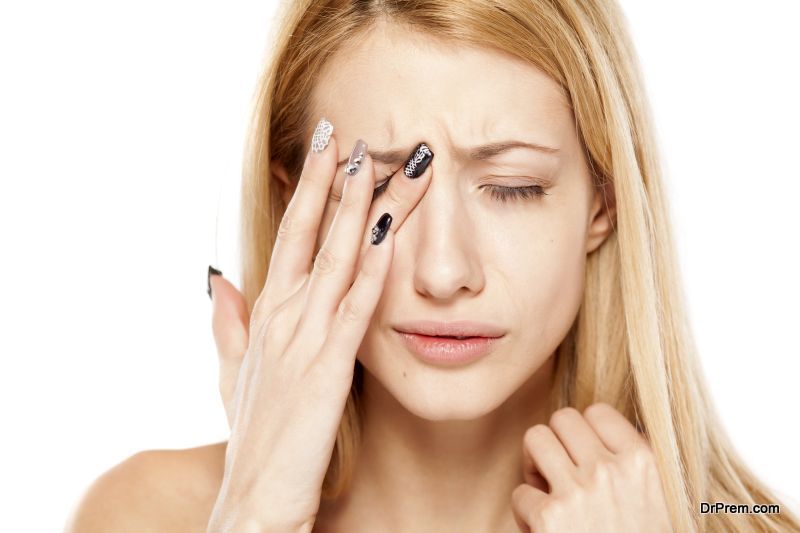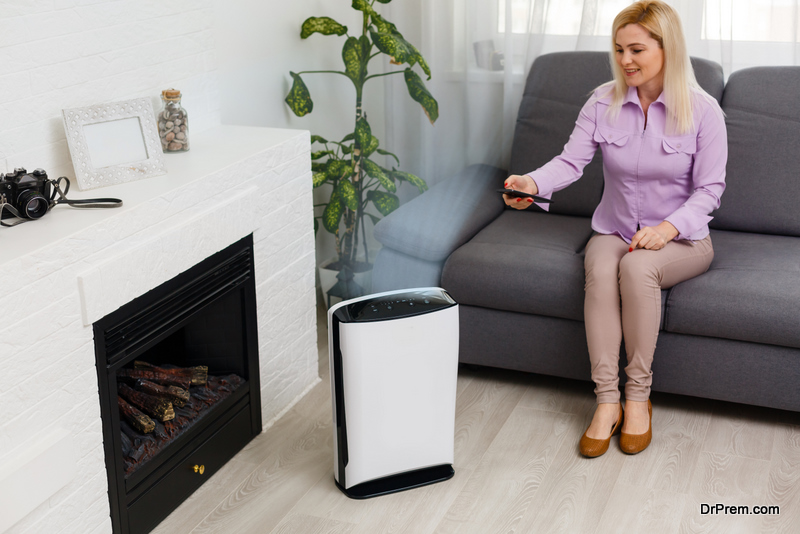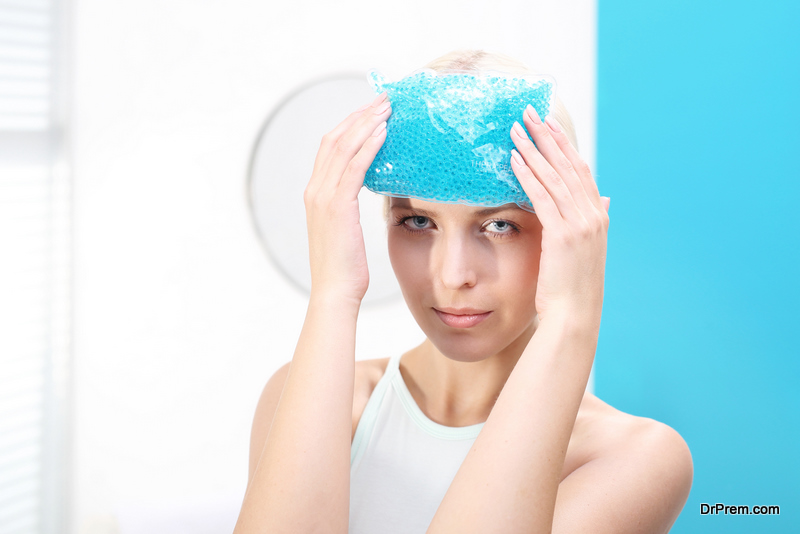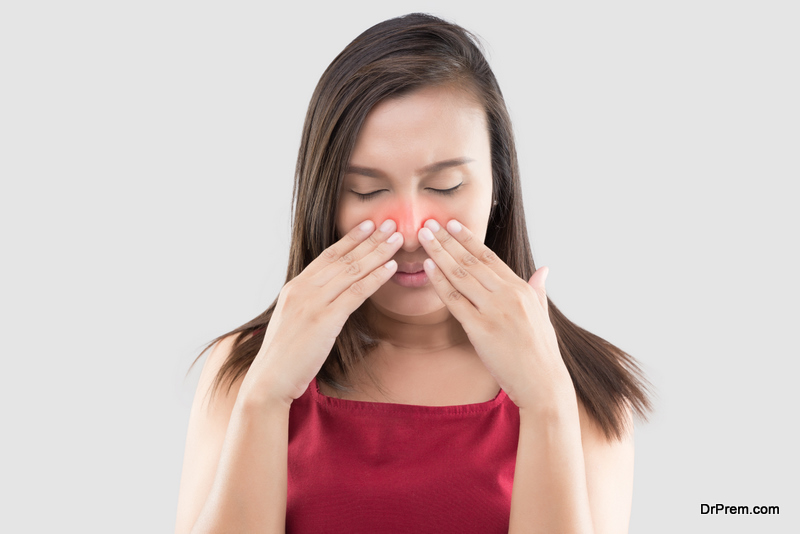The sinus surgery is performed on the nose. Hence, there can be some swelling and pain on the nose. This swelling can cause a stuffy nose and make it difficult for the person to breathe. Other than that, here are some side effects that can occur are-
- Infection
- Bleeding
- Hole in the septum
- Loss of sense and smell
- Change in voice
Don’t worry as you can get relief from the congestion and breathe freely if you follow the below mentioned 10 home remedies after the sinus surgery.
1. Irrigate the sinuses
 On the first day of the recovery itself, doctors recommend patients to remove the nasal packing and rinse the sinuses and nasal passages with saline solution. It can help get rid of debris and blood clots and aid in healing the wound faster. Remember, ask the doctor to show how to use a neti pot so that the water doesn’t get into the nostrils accidentally. Also, this helps to filter out any bacteria and pollutants that can cause an infection.
On the first day of the recovery itself, doctors recommend patients to remove the nasal packing and rinse the sinuses and nasal passages with saline solution. It can help get rid of debris and blood clots and aid in healing the wound faster. Remember, ask the doctor to show how to use a neti pot so that the water doesn’t get into the nostrils accidentally. Also, this helps to filter out any bacteria and pollutants that can cause an infection.
2. Take prescribed medicines
During the discharge, the doctor will prescribe some medicines that will assist in pain management, and reducing nasal congestion. Take only the prescribed amounts as recommended by the doctor. Or else, it can cause excessive bleeding. Take antibiotics in case there are symptoms of infection. Generally for pain, doctors recommend painkillers such as paracetamol. To reduce the risk of swelling, one can also take nasal sprays that contain steroids.
3. Inhale moist air
 The dry air can irritate the nose and the wound. The moist air helps to relieve out sinus pressure so keep a humidifier after the surgery. In some cases, nasal sprays can help. After 48 hours of the surgery, take hot showers or place the face over a bowl of hot boiling hot water to inhale humid air.
The dry air can irritate the nose and the wound. The moist air helps to relieve out sinus pressure so keep a humidifier after the surgery. In some cases, nasal sprays can help. After 48 hours of the surgery, take hot showers or place the face over a bowl of hot boiling hot water to inhale humid air.
4. Sleep with head elevated
If you sleep flat on your back after sinus surgery, this can increase the chances of the nasal passages clogging up, making the patient uncomfortable throughout the night. If you are unable to take proper rest, the body will slow down the healing process. Hence, before going to bed, put some extra pillows under the bed so that when you sleep, it is at a 45-degree angle. This will prevent the nose from blocking.
5. Apply an ice pack
 In order to get relief from the swelling, facial pain and headache, put an ice pack or some ice cubes wrapped in a towel on the mouth or near the wound. Don’t keep it for more than three minutes several times a day to subside the pain and swelling.
In order to get relief from the swelling, facial pain and headache, put an ice pack or some ice cubes wrapped in a towel on the mouth or near the wound. Don’t keep it for more than three minutes several times a day to subside the pain and swelling.
6. Take enough rest
When the body is asleep, the immunity system produces antibodies that help to fight off any harmful organisms and speeds up the healing process. Therefore for the initial 24-48 hours, take sufficient rest. Before going to bed, don’t drink something that doesn’t let the body sleep.
7. Drink lots of water
 As the person is unable to breathe properly through the nose due to the stent placed, the person has to breathe mostly through the mouth. Hence, this can cause dryness of the mouth and throat. Also, due to the effect of anesthesia, the patient may not feel like eating or drinking anything. But it is important that he or she should drink at least 1.5-2 liters of water to prevent dehydration and keep the throat lining moist. Not only water but also make them drink soups, tea, soups or fresh juices.
As the person is unable to breathe properly through the nose due to the stent placed, the person has to breathe mostly through the mouth. Hence, this can cause dryness of the mouth and throat. Also, due to the effect of anesthesia, the patient may not feel like eating or drinking anything. But it is important that he or she should drink at least 1.5-2 liters of water to prevent dehydration and keep the throat lining moist. Not only water but also make them drink soups, tea, soups or fresh juices.
8. Avoid dairy products
In the initial days of the recovery, don’t consume milk or any dairy products. Milk tends to thicken the mucus in the sinuses. Moreover, dairy products are not easily digestible that can cause the person to strain excessively during a bowel movement. Thus, avoid taking such products even after taking out the nasal packing for a while. This will reduce postnasal drip as well as reduce the chances of the infection in the sinuses.
9. Stay away from triggers
 There are several elements that can trigger an allergic reaction. This allergic reaction can interfere with the healing of the wound and can cause nasal blockage. For the entire recovery period, make sure you stay away from the triggers as much as possible. Here’s what you can do-
There are several elements that can trigger an allergic reaction. This allergic reaction can interfere with the healing of the wound and can cause nasal blockage. For the entire recovery period, make sure you stay away from the triggers as much as possible. Here’s what you can do-
- Avoid drinking alcohol
- Change the bed sheets regularly
- Avoid flying or swimming for a couple of months
- Use a humidifier to inhale moist area
10. Inhale steam
After a couple of days after the surgery, the patient has to visit the ENT doctor again for removing the nasal packing. Once the packing is removed, air can pass easily through the nasal cavity. However, in some cases, there can be some swelling causing some blockage. To reduce the swelling, inhale steam which can help to open the nasal passages and prevent infection.
Activities to Avoid After Sinus Surgery to Prevent Congestion
Here is a list of activities that the patient should avoid at any cost to prevent nasal blockage and swelling.
- For the initial first two weeks of the recovery, neither fly nor go for swimming.
- Do not exercise and limit any physical exertion after the surgery, at least for 15 days.
- There should not be any bending, straining or lifting.
- Do not visit places that are very dusty or smokey or else it can disturb the nasal passages.
- Avoid going to work for at least one week. In case your job involves performing strenuous activities, then take a longer period of leave.
Conclusion
The patient is able to completely recover within a week after the sinus surgery. The swelling, nasal congestion tends to continue even after the nasal packing is removed. After the two days into the recovery, the patient can resume daily activities. However, strenuous activities such as bending or coughing should be completely avoided. In case, you are experiencing severe symptoms such as fever, excessive pain or nose bleeding or headache, then seek medical attention immediately. Contact the doctor immediately.
Article Submitted By Community Writer




